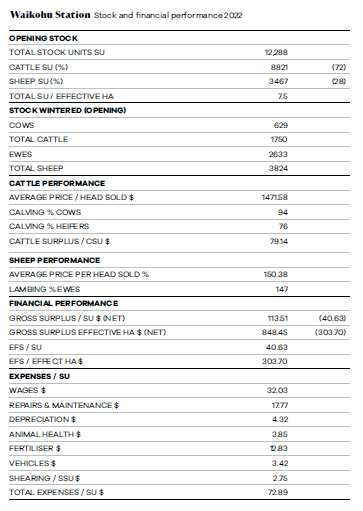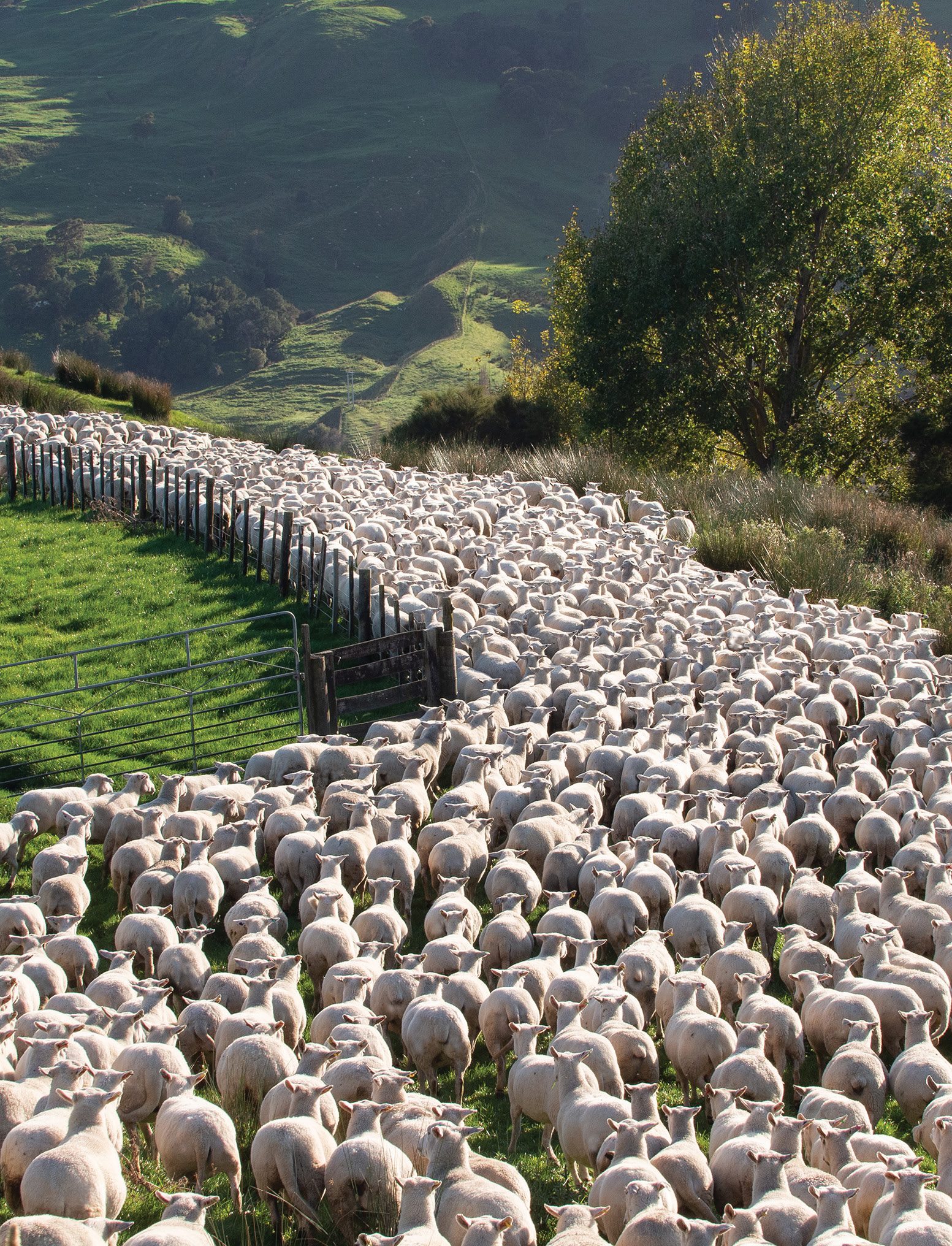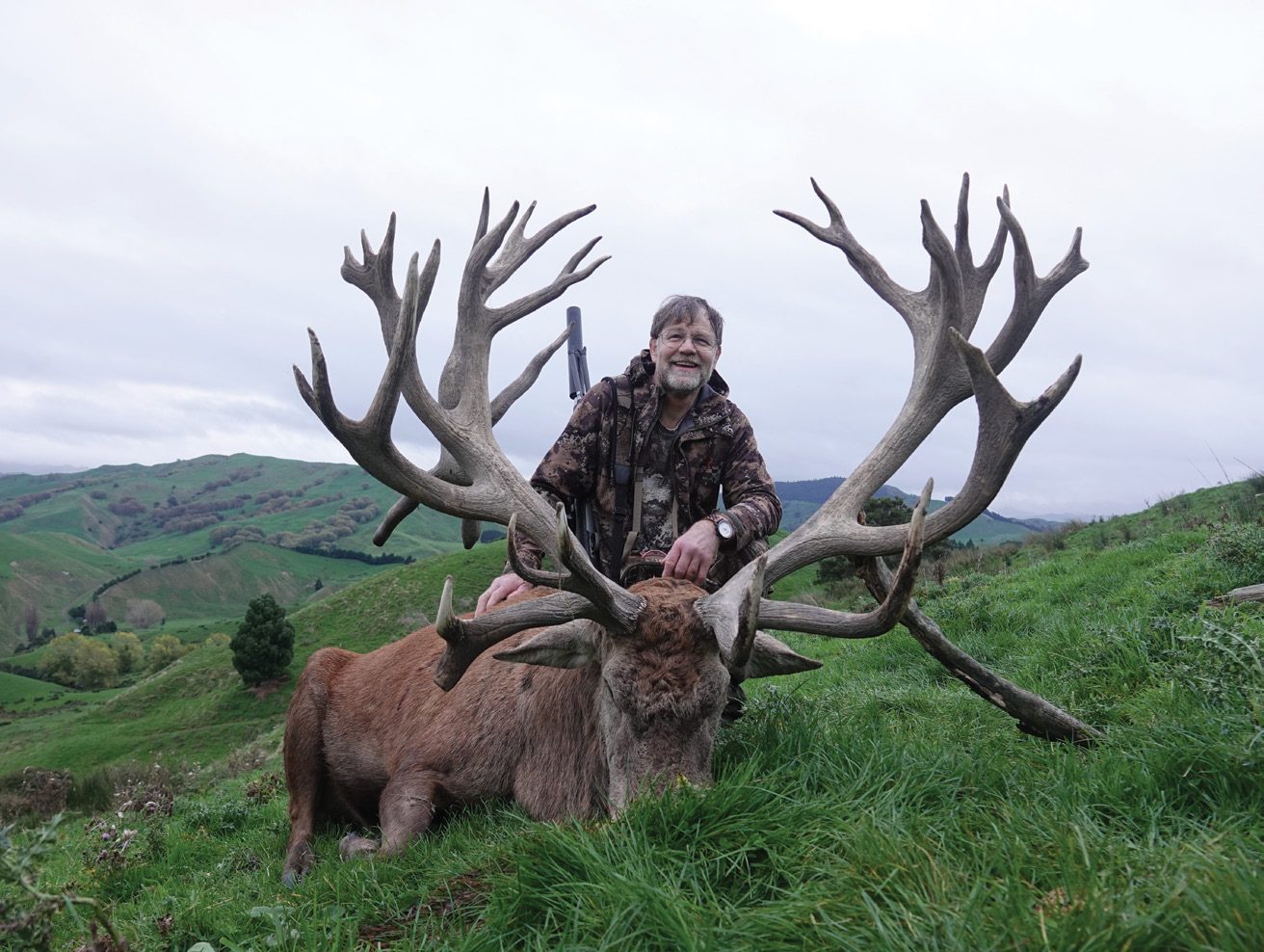Wool away
BJ Holdsworth has many strings to his bow. Louise Savage reports on the switch to Wiltshire sheep and the hunting business.

Waikohu Station, 34km northwest of Gisborne, has been in the Holdsworth family for 113 years, yet the changes wrought in the past four have been revolutionary for the sheep side of the business.
Owner/manager Bernard Holdsworth, known as BJ, mothballed the large woolshed in 2022 having seen off the very last of his Romney-Coopworth flock. The sheep on Waikohu are now purebred Wiltshires, selected for complete shedding, and BJ wishes he’d made the change years ago.
Having read about Wiltshire sheep years ago in a farming magazine, BJ decided they were the way to go for Waikohu Station. A meat breed, they grow quickly into a large-framed sheep.
“At 70kg plus, some of the ewes are bigger than me.”
He was attracted by the reduced inputs Wiltshires offered at a time when wool had become a cost rather than a benefit to produce, and in addition their parasite- and disease-resistance. In 2019, to begin replacing the Romney-Coopworth flock, BJ bought 940 Wiltshire ewe lambs. They came from four different sources and ranged in price from $91 to $254 a head.
“They were the sellers’ cull ewe lambs, so we did start with a motley crew.”
For the ensuing four years BJ has retained the ewe lambs that have shed completely, and now the flock is approaching 100% shedding.
“I get a kick out of telling people my new shearing policy, which is zip, zilch and didley squat!”
The incredible growth rates among the Wiltshire lambs are augmented by low-stress weaning and handling.
Formerly, the Romney-Coopworth lambs would be weaned, and the ewes brought down, gone through and shorn.
“Four weeks later it was the lambs’ turn. They got mustered, chased by dogs and went on this big walk from way out the back of the farm to the woolshed yards.
“They were penned, lost a day of feed because the shearers wanted them empty, then were shorn, sent down the chute and were chased by dogs all the way out to their paddocks again.
“They lost at least a kilogram of condition, and that’s being conservative.”
The Wiltshire lambs don’t have to go through any of that. They remain in their paddocks grazing, have no big walk, no stress, no dogs, no shearing. Instead of losing condition, the Wiltshire lambs are in their paddock gaining weight.
“I reckon by then they’re 2kg ahead, conservatively. On top of that, the stress and workload for people and dogs is much reduced as well.
He says once their wool was removed, a portion of every bite of feed the Romney-Coopworth lambs took was going into growing wool back. Unfortunately it had little value.
“The Wiltshires drop their wool, with no help from me, and then retain their short, summer cover while putting on condition.”
In addition to no shearing, there’s no crutching, no docking, no dagging, and fly strike is much reduced.
BJ estimates a month’s work is eliminated for two stockmen a year by not having to do those jobs involved with woolly sheep.
When analysing the savings made, BJ found a surprise component of shearing expenses was fuel.
“The shepherd’s vehicle was being filled every second day around shearing.”
On May 22 the ewes were scanned to identify and draft off the early-lambers. They’ll be lambed close to home in the front country, weaned first and the ram lambs sold straight off the ewe.
The ewes were in top condition, some about 70kg, and scanned in-lamb at 173%. Cyclones and record rainfall aside, 2022-23 was a great grass-growing season in Gisborne district. Last year Waikohu achieved weaning of 144% from 160% scanning, with lamb weaning weights of 26.4kg.
Ewes are spread out into paddocks with at least 800–1000kg drymatter (DM)/ha, those carrying twins into the warmest, north-facing paddocks.
“We’re lucky with our aspect and elevation. Lamb survival is usually great here.”
Lambs are drenched on their mothers a month before weaning. That’s when wet-dries are removed and lambing percentage determined. In mid- November lambs are weaned back into the paddocks they were born in. Being in familiar terrain makes it easier the next time they’re mustered.
“Wiltshires are a little contrary to handle; they muster differently. I’m used to them now, as are the dogs. They’re a bit sticky going downhill but move better in familiar paddocks.”
With no docking BJ has observed a decrease in mis-mothering, and fewer injuries or arthritis in the flock.
Uninterrupted growth means lambs killed before Christmas normally make 36–42kg liveweight (LW) and those after Christmas 42kg+ LW. This year lambs averaged 17.6kg carcase weight pre- Christmas and post-Christmas 20.4kg. Most are gone by the end of March. If it turns dry, as many as possible are killed even if at lower weights, or are sold store.
“They have a phenomenal yield.”
Lambs retaining any wool, having not fully shed, were sold last season for an average of $200.
This year 550 hoggets were mated between April 20 and June 1. BJ hopes for 80% hogget lambing this year.
“So far we haven’t mated all hoggets in case of a dry spring, but in future we want to mate all our hoggets and plant a specialised crop for the two-tooths and bring them up to tupping weights.”
Rams are selected for facial eczema tolerance, fertility, fast growth weights and complete shedding.
BJ is the third generation to farm Waikohu, having worked on several other farms and travelled overseas, he returned home in 1999 to take over running Waikohu.
The farm is a company, owned by BJ, along with his father and children Georgia (18) and Luke (16). BJ managed to buy out his four sisters, “That took me 23 years, and I am carrying quite some debt.”
Capital stock on Waikohu include 3000 ewes, 460 mixed-age cows, and 130 heifers with autumn calves at foot. In addition, a value-added trophy hunting business is run alongside the farming operation.
Two full-time staff work with BJ on the farm. Kory Cross is a shepherd; Jim Graham does fencing and runs the maize cropping. Daughter Georgia is home helping this year on the farm, and cooking for the hunting clients.
Waikohu averages 210 metres elevation, the highest point only 300m. The winters are therefore mild with a long grass-growing season. The main challenge is potential summer drought, and possibly having to unload stock in response. The farm is well protected against erosion having had willows, poplars and small pine plantations established over many decades, and native vegetation in the gullies retained.
There are 22 hectares of mature pines due for harvest soon, and several areas awaiting retirement and planting with natives.
The cultivated flats are adjacent to the Waikohu River, not far downstream from the confluence of the Waikohu with the Wharekopae River. The enormous catchment those two rivers drain makes the maize flats prone to flooding, and 6.5km of fence was lost in Cyclone Gabrielle. The fences were reinstated and the flats re-seeded, only to be inundated, fences and grass wiped out in the weather event the third week of June.
Due to the proportion of easy, rolling country, Taupo pumice covers 60% of Waikohu. While the ash soils are free-draining and well suited to cattle grazing, they are hydrophobic and have poor phosphate retention.
“Annually, 200 tonnes of fertiliser is flown on, most of the hill country receiving 250kg/ha. The flats we fertilise at 300kg/ha and grow 32ha of maize ourselves. They get a bit of nitrogen in addition, and a contractor harvests the maize.”
Olsen P is 20+ on the flats and 17–20 on the hill country. Soil pH is 6+ on the flats and 5.8 on the hill country (5.7 on the Taupo pumice soils).
More beef, less grief
Over the years sheep numbers have been reduced on Waikohu in favour of a lift in South Devon cattle numbers, which now comprise the second-largest South Devon herd in the world (there’s one larger in Australia).
Hardy, quiet-tempered and fast-growing, South Devons are the largest British beef breed. Originally bred for milk and meat, since the 1970s the focus has been solely on growing beef.
There are typically 460 mixed-age cows and 130 autumn-calved heifers with calves at foot. This year 640 cows will be wintered.
The mixed-age cows are mated beginning November 1, bulls taken out January 5. Heifers are mated at 20–21 months, May 1 through to June 30.
BJ selects homozygous polled sires with proven serving capacity, flesh-cover and early maturity.
Calving on to saved pasture commences the first week of August.
“Spring hits here usually on the 20th of August, which is peak-calving.”
In a good grass year, steers are killed at 630kg. In a dry year they are killed at 600kg or sold privately. The steers are easy to sell as they are quiet to handle and grow out well.
In addition to pasture, up to 400t of silage is cut in December from 20ha shut up in mid-October. There are pits up to six years old, up to 1200t saved for the Big Dry, when it comes. Silage is Waikohu’s saviour in a drought year.
A passion for hunting
Having long been a keen hunter, raised in a hunting family, a dream of BJ’s came to fruition in 2005 when he guided his first client on Waikohu Station. The business, AmpleHunting, is now so successful bookings are taken up to three years in advance; only a few 2024 slots are available, and reviews by clients and in international hunting magazines have placed BJ right at the top of his game, so to speak.
Waikohu – well-tracked and having glorious vistas, streams, areas of bush, copses of deciduous and native trees – is a hunter’s paradise. Clients come from all over the world to hunt “ten square miles of scenery” for trophy red stags, fallow bucks, Arapawa rams, goats, ducks and turkeys.
Having hunted all over New Zealand as well as overseas, BJ had experienced being guided and he knew the experience was enhanced by being in a small, personalised group.
“If the guides are stretched, looking after multiple clients, the experience suffers.
“Exclusivity, small, boutique hunts and personalised service was my mantra for AmpleHunting, my point of difference, and hunters’ reviews back that up.”
For the first few years the hunts were mainly for meat with a few trophy-hunting guests. As he felt his way into the business it became apparent guests valued the entire experience. Comfortable accommodation and being well fed were just as important as the adrenalin rush hunting in the hills.
As a people-person, BJ discovered he “made friends with pretty much everyone who walked though the door”. “After all, we’ve got a common passion.”
In order to entice bow hunters, BJ began to learn that craft in 2011 and quickly became hooked.
“I had lessons from a pro bow hunter and hunted with my bow at least twice a week. Two years later I’d taken nine free-range trophy species by bow and received the Master Bowhunter award, a real thrill as I was the only professional guide to receive it.”
An eye to the future
 BJ says his number one goal is to “enjoy our occupation here”.
BJ says his number one goal is to “enjoy our occupation here”.
“We intend to lift stocking rates, and this will be achieved by paddock subdivision including water reticulation, boosting soil fertility with increased fertiliser rate, and re-grassing where needed.”
He intends to continue to build an elite, easy-care flock of Wiltshire sheep. And with less time spent on sheep-related jobs “I’d like to spend more time fishing”.
Objectives for the sheep flock include high fertility with sound feet, eczema-tolerance, and total shedding ability.
The improvements will also benefit the steer-fattening part of the business and give faster gains for heifers and ram lambs.
BJ measures success by being able to comfortably service debt, attain good net profits, while having healthy stock, good scanning results and moving weaning percentages ever closer to scanning percentages.
Further tree planting, including fencing and native reversion of gullies, is another goal.
Waikohu Station, in the capable hands of the current generation, is going from strength to strength. Coming from a position of heritage, history and tradition, BJ has been able to adapt and add much more value to the business.
The ratio of cattle to sheep on Waikohu is 70:30.
BJ says because Wiltshires are very much a lifestyle breed, they may consider having a higher percentage of sheep on a stock unit basis. The ratio of sheep to cattle may balance.

“With our change to Wiltshires there’s less wear and tear on me and the staff.
BJ says that means he will be able to carry on doing what he loves doing a lot longer.
And have more time to enjoy his hunting and fishing.
FARM FACTS:
Waikohu, Gisborne
- 1787ha sheep and beef breeding and finishing farm
- Can be summer-dry, past two years very wet
- Typically winters 14,500 stock units
- Change to 100% Wiltshire flock
- Shearing cost 2022, $2.75/SU
- Second-largest South Devon breeding herd in the world
- Trophy hunting business, US$10,000 a head

One of Ample Hunting’s very satisfied
international clients with his impressive trophy stag.




